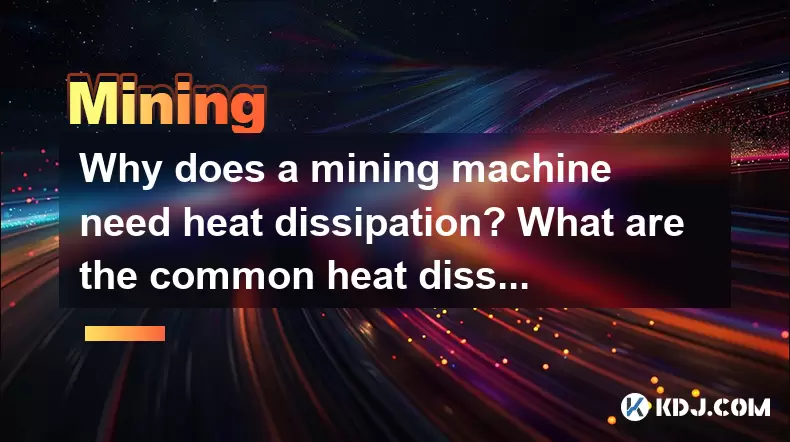-
 Bitcoin
Bitcoin $117700
-0.03% -
 Ethereum
Ethereum $3805
0.49% -
 XRP
XRP $3.098
-1.00% -
 Tether USDt
Tether USDt $1.000
0.03% -
 BNB
BNB $792.8
-1.72% -
 Solana
Solana $177.9
-1.95% -
 USDC
USDC $1.000
0.02% -
 Dogecoin
Dogecoin $0.2202
-1.55% -
 TRON
TRON $0.3278
-2.92% -
 Cardano
Cardano $0.7641
-2.43% -
 Hyperliquid
Hyperliquid $42.21
-2.68% -
 Sui
Sui $3.758
-1.58% -
 Stellar
Stellar $0.4080
-3.21% -
 Chainlink
Chainlink $17.75
-0.33% -
 Bitcoin Cash
Bitcoin Cash $591.8
4.96% -
 Hedera
Hedera $0.2561
-3.09% -
 Avalanche
Avalanche $23.34
-4.24% -
 Litecoin
Litecoin $110.7
1.96% -
 UNUS SED LEO
UNUS SED LEO $8.956
-0.01% -
 Toncoin
Toncoin $3.410
0.79% -
 Ethena USDe
Ethena USDe $1.001
0.03% -
 Shiba Inu
Shiba Inu $0.00001288
-1.82% -
 Uniswap
Uniswap $10.07
-2.06% -
 Polkadot
Polkadot $3.807
-2.27% -
 Monero
Monero $308.2
-2.15% -
 Dai
Dai $1.000
0.03% -
 Bitget Token
Bitget Token $4.521
-0.30% -
 Pepe
Pepe $0.00001134
-1.52% -
 Cronos
Cronos $0.1457
0.65% -
 Aave
Aave $274.9
-2.47%
Why does a mining machine need heat dissipation? What are the common heat dissipation methods?
Effective heat dissipation is vital for mining machines to prevent overheating, maintain performance, and extend hardware lifespan, using methods like air, liquid, and immersion cooling.
May 11, 2025 at 03:49 am

Mining machines, also known as cryptocurrency miners, are specialized hardware devices designed to solve complex mathematical problems and validate transactions on blockchain networks. These machines generate a significant amount of heat during operation due to the high computational power required for mining. Effective heat dissipation is crucial for maintaining the performance and longevity of mining machines. In this article, we will explore why heat dissipation is essential for mining machines and discuss the common methods used to manage heat.
Importance of Heat Dissipation in Mining Machines
Mining machines operate at high speeds and consume substantial amounts of electricity to perform their tasks. The intense processing power leads to the generation of heat, which can adversely affect the hardware if not properly managed. Overheating can cause components to degrade faster, leading to reduced efficiency and potential hardware failure. Therefore, efficient heat dissipation is vital to keep the mining machine running smoothly and to extend its operational lifespan.
Common Heat Dissipation Methods
There are several methods used to dissipate heat from mining machines. Each method has its advantages and is chosen based on factors such as the type of mining machine, the environment in which it operates, and the desired level of cooling efficiency. Let's explore some of the most common heat dissipation methods used in the cryptocurrency mining industry.
Air Cooling
Air cooling is one of the most widely used heat dissipation methods for mining machines. This method involves using fans to circulate air over the hot components, drawing heat away from the hardware. Air cooling is relatively simple and cost-effective, making it a popular choice for many miners.
- Install fans strategically: Place fans in a way that maximizes airflow over the hottest components, such as the GPU or ASIC chips.
- Ensure proper ventilation: Make sure the mining machine is placed in a well-ventilated area to allow hot air to escape and be replaced by cooler air.
- Regular maintenance: Clean the fans and vents regularly to prevent dust buildup, which can impede airflow and reduce cooling efficiency.
Liquid Cooling
Liquid cooling is another effective method for dissipating heat from mining machines. This method uses a liquid coolant, such as water or a specialized cooling fluid, to absorb heat from the components and transfer it away from the machine. Liquid cooling can be more efficient than air cooling, especially for high-performance mining rigs.
- Choose the right coolant: Select a coolant that is compatible with your mining machine and has good thermal conductivity.
- Install the liquid cooling system: Follow the manufacturer's instructions to install the liquid cooling system, ensuring all connections are secure and leak-free.
- Monitor the system: Regularly check the coolant levels and the system's performance to ensure it is functioning correctly.
Heat Sinks
Heat sinks are passive cooling devices that help dissipate heat from mining machines. They are typically made of materials with high thermal conductivity, such as aluminum or copper, and are attached to the hot components to draw heat away from them. Heat sinks are often used in conjunction with other cooling methods to enhance overall cooling efficiency.
- Select the appropriate heat sink: Choose a heat sink that is designed for your specific mining machine and components.
- Attach the heat sink securely: Use thermal paste to ensure good contact between the heat sink and the component, and secure it with screws or clips.
- Combine with other cooling methods: Use heat sinks in combination with fans or liquid cooling to maximize heat dissipation.
Immersion Cooling
Immersion cooling is a more advanced method of heat dissipation that involves submerging the entire mining machine in a non-conductive liquid. This liquid absorbs heat directly from the components, providing highly efficient cooling. Immersion cooling is particularly useful for large-scale mining operations where heat management is critical.
- Select the appropriate liquid: Choose a non-conductive liquid with good thermal properties, such as mineral oil or synthetic fluids.
- Prepare the immersion tank: Ensure the tank is clean and properly sealed to prevent leaks.
- Submerge the mining machine: Carefully lower the mining machine into the liquid, ensuring all components are fully immersed.
- Monitor the system: Regularly check the temperature and performance of the mining machine to ensure the immersion cooling system is working effectively.
Phase Change Cooling
Phase change cooling is a sophisticated method that uses the principle of phase transition to dissipate heat. This method involves using a refrigerant that changes from a liquid to a gas as it absorbs heat from the mining machine. The gas is then condensed back into a liquid, and the cycle repeats. Phase change cooling can provide very high cooling efficiency but is more complex and expensive to implement.
- Select the appropriate refrigerant: Choose a refrigerant that is suitable for your mining machine and has good thermal properties.
- Install the phase change cooling system: Follow the manufacturer's instructions to install the system, ensuring all connections are secure and leak-free.
- Monitor the system: Regularly check the refrigerant levels and the system's performance to ensure it is functioning correctly.
FAQs
Q: Can I use multiple heat dissipation methods together?
A: Yes, combining multiple heat dissipation methods can enhance overall cooling efficiency. For example, using heat sinks in conjunction with air or liquid cooling can provide better heat management for your mining machine.
Q: How often should I clean my mining machine's cooling system?
A: It is recommended to clean your mining machine's cooling system, including fans and vents, at least once every three months to prevent dust buildup and maintain optimal cooling performance.
Q: Is immersion cooling safe for all types of mining machines?
A: Immersion cooling is generally safe for most mining machines, but it is essential to ensure that the liquid used is non-conductive and compatible with your specific hardware. Always follow the manufacturer's guidelines and recommendations.
Q: What are the signs that my mining machine is overheating?
A: Signs of overheating in a mining machine include increased temperatures, reduced performance, frequent shutdowns, and unusual noises from the fans or other components. If you notice any of these signs, it is crucial to address the issue promptly to prevent damage to your hardware.
Disclaimer:info@kdj.com
The information provided is not trading advice. kdj.com does not assume any responsibility for any investments made based on the information provided in this article. Cryptocurrencies are highly volatile and it is highly recommended that you invest with caution after thorough research!
If you believe that the content used on this website infringes your copyright, please contact us immediately (info@kdj.com) and we will delete it promptly.
- XRP, AI, and Price Projections: Decoding the Crypto Future
- 2025-07-31 15:10:13
- XRP Investment: Expert Opinions and the Potential for Explosive Growth
- 2025-07-31 15:15:12
- XRP Price: Whale Buys and Token Scoops—What's Next?
- 2025-07-31 15:30:12
- Imagen Network, RLUSD Payments, and Decentralized Applications: A New Era of Web3?
- 2025-07-31 14:30:12
- Meme Coins: Buy and Hold for the Long Term? Decoding the Hype
- 2025-07-31 14:30:12
- XRP Analyst's Market Outlook: Boom or Bust in the Crypto Wild West?
- 2025-07-31 15:35:19
Related knowledge

What was the highest APY for IRON mining?
Jul 23,2025 at 05:14am
Understanding IRON Token and Its Mining MechanismThe IRON token is a stablecoin that operates within the Iron Finance ecosystem, primarily on blockcha...

What is impermanent loss in IRON pools?
Jul 23,2025 at 09:00am
Understanding Impermanent Loss in the Context of IRON PoolsImpermanent loss is a phenomenon that affects liquidity providers in decentralized finance ...

How to claim rewards from IRON mining?
Jul 23,2025 at 02:21pm
Understanding IRON Mining and Reward MechanismsIRON Finance operated as a decentralized finance (DeFi) protocol on the Polygon and Binance Smart Chain...

How to claim rewards from IRON mining?
Jul 29,2025 at 05:07am
Understanding IRON Mining and Reward MechanismIRON is a dual-token system designed to stabilize the value of a synthetic asset through a combination o...

IRON mining tutorial for beginners
Jul 27,2025 at 12:01am
What Is IRON and How Does It Work in the Cryptocurrency Ecosystem?IRON is a cryptocurrency token that operates on the Binance Smart Chain (BSC) and is...

How to calculate APY for IRON mining?
Jul 28,2025 at 09:49am
Understanding APY in the Context of IRON Token MiningWhen engaging in IRON token mining within decentralized finance (DeFi) platforms, Annual Percenta...

What was the highest APY for IRON mining?
Jul 23,2025 at 05:14am
Understanding IRON Token and Its Mining MechanismThe IRON token is a stablecoin that operates within the Iron Finance ecosystem, primarily on blockcha...

What is impermanent loss in IRON pools?
Jul 23,2025 at 09:00am
Understanding Impermanent Loss in the Context of IRON PoolsImpermanent loss is a phenomenon that affects liquidity providers in decentralized finance ...

How to claim rewards from IRON mining?
Jul 23,2025 at 02:21pm
Understanding IRON Mining and Reward MechanismsIRON Finance operated as a decentralized finance (DeFi) protocol on the Polygon and Binance Smart Chain...

How to claim rewards from IRON mining?
Jul 29,2025 at 05:07am
Understanding IRON Mining and Reward MechanismIRON is a dual-token system designed to stabilize the value of a synthetic asset through a combination o...

IRON mining tutorial for beginners
Jul 27,2025 at 12:01am
What Is IRON and How Does It Work in the Cryptocurrency Ecosystem?IRON is a cryptocurrency token that operates on the Binance Smart Chain (BSC) and is...

How to calculate APY for IRON mining?
Jul 28,2025 at 09:49am
Understanding APY in the Context of IRON Token MiningWhen engaging in IRON token mining within decentralized finance (DeFi) platforms, Annual Percenta...
See all articles

























































































